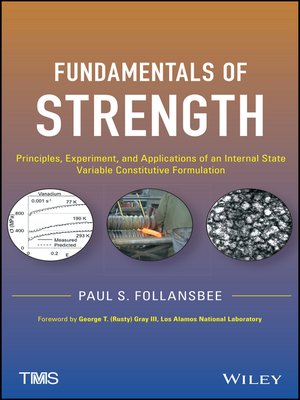Fundamentals of Strength
ebook ∣ Principles, Experiment, and Applications of an Internal State Variable Constitutive Formulation
By Paul S. Follansbee

Sign up to save your library
With an OverDrive account, you can save your favorite libraries for at-a-glance information about availability. Find out more about OverDrive accounts.
Find this title in Libby, the library reading app by OverDrive.



Search for a digital library with this title
Title found at these libraries:
| Library Name | Distance |
|---|---|
| Loading... |
Offers data, examples, and applications supporting the use of the mechanical threshold stress (MTS) model
Written by Paul S. Follansbee, an international authority in the field, this book explores the underlying theory, mechanistic basis, and implementation of the mechanical threshold stress (MTS) model. Readers are introduced to such key topics as mechanical testing, crystal structure, thermodynamics, dislocation motion, dislocation–obstacle interactions, hardening through dislocation accumulation, and deformation kinetics. The models described in this book support the emerging theme of Integrated Computational Materials Engineering (ICME) by offering a foundation for the bridge between length scales characterizing the mesoscale (mechanistic) and the macroscopic.
Fundamentals of Strength begins with a chapter that introduces various approaches to measuring the strength of metals. Next, it covers:
The next group of chapters examines the application of the MTS model to copper and nickel, BCC metals and alloys, HCP metals and alloys, austenitic stainless steels, and heavily deformed metals. The final chapter offers suggestions for the continued development and application of the MTS model.
To help readers fully understand the application of the MTS model, the author presents two fictional materials along with extensive data sets. In addition, end-of-chapter exercises give readers the opportunity to apply the models themselves using a variety of data sets.
Appropriate for both students and materials researchers, Fundamentals of Strength goes beyond theory, offering readers a model that is fully supported with examples and applications.







